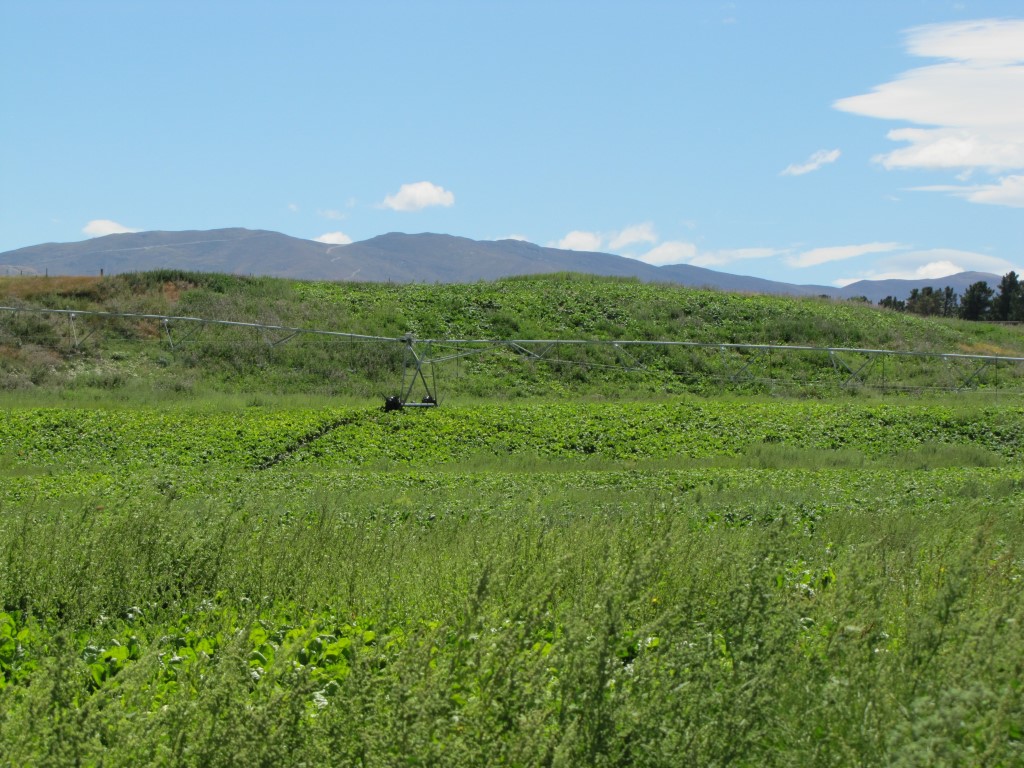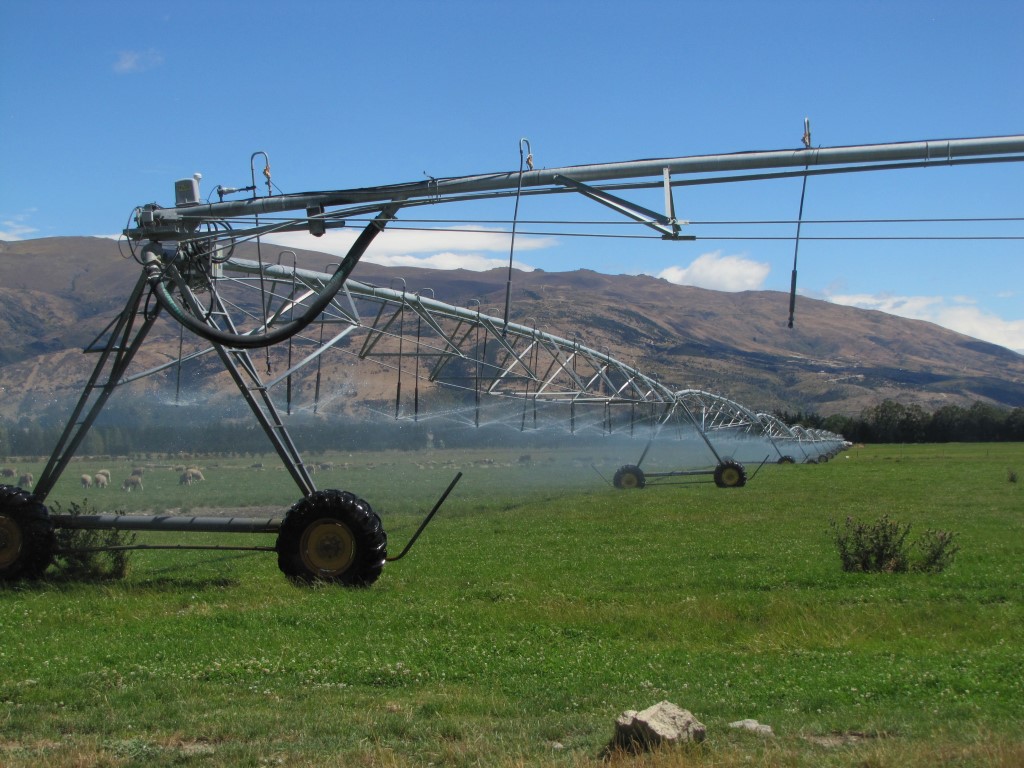
The Lindis River is one whose low flow was highlighted in an Otago Regional Council (ORC) statement last week, asking farmers across Otago to conserve water and monitor their water takes.
The Lindis and Cardrona rivers are dry in some sections, and the Taieri River and nearby Kye Burn dropped to record low levels in December, ORC engineering, hazards and science director Gavin Palmer said.
Aquifers monitored by the ORC were also very low during December, particularly in the Hawea Basin, Wakatipu Basin, Dunstan Flat in Central Otago, South Dunedin and West Lower Taieri.
When the Otago Daily Times was in the Tarras area last weekend, the Lindis River was dry at the bridge crossing on State Highway 8, about 7km south of Tarras. But many green paddocks surrounded it, and there were 11 pivot irrigators operating in a 10km stretch either side of Tarras.

Council senior policy analyst Tom De Pelsemaeker said irrigation water in the Tarras and Bendigo areas came from several sources: the Lindis River and the alluvial ribbon aquifer which was hydraulically connected to the river and extended along both sides of the river; the Clutha River; and the Bendigo and Lower Tarras aquifers.
Mr De Pelsemaeker said two flow recorders monitored the level of the Lindis River, one high in the catchment upstream from the Cluden Hill summit, and the other at an Ardgour Rd site upstream from the SH8 crossing bridge.
The recorded seven-day low flow in the irrigation season recorded at the Ardgour Rd monitoring site was 268 litres per second, he said. If no water was taken from the river, the seven-day low flow at that site during the irrigation season was estimated to be around 1745 l/sec.
He said the volume of water taken for irrigation from the Clutha River and the Bendigo and Lower Tarras aquifers had increased over the past decade. In response to that, and to avoid the Clutha becoming over-allocated in the future, the ORC had initiated a plan change to set an allocation limit and minimum flow for the Clutha.
Allocation limits were already in place for the Lower Tarras and Bendigo aquifers, through Plan Change 5A. The limits were not appealed, and took effect in September 2016.
A date is still to be set for an Environment Court hearing into the setting of a minimum flow for the Lindis River, which the ORC considered to be over-allocated, Mr De Pelsemaeker said.
In 2016, the ORC had decided to restrict the summer flow of the Lindis River to 900 l/sec, and implement that in 2021.

Group spokesman Bruce Jolly said farmers were nervous about the costs and process of the court hearing, but felt they had no choice if they were to continue farming economically.
As well as its appeal of the minimum flow the ORC had set, the catchment group had made an application on behalf of about 20 Lindis catchment farmers for new water consents.
The group had been advised the application would be considered concurrently with the minimum flow by the Environment Court, Mr Jolly said.
The joint consent application had been made on the basis that the Lindis River minimum flow would be set at 550 l/sec, he said. If it ended up being greater than that, the group would withdraw its application, as the minimum flow needed to be at least 550 l/sec for farmers in the region to operate viably economically.
Mr Jolly said much of the irrigation water in the Lindis area at present was from the Clutha River, and some farmers were not utilising their full water takes from the Lindis River.
He estimated 90% of the irrigation water on farms between Tarras and the SH8 crossing of the Lindis River was from the Clutha.











